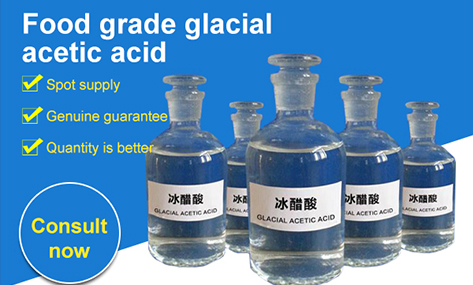
12 月 . 03, 2024 18:50 Back to list
why is pure acetic acid often called glacial acetic acid
Why is Pure Acetic Acid Often Called Glacial Acetic Acid?
Acetic acid, a staple in both culinary and industrial contexts, is recognized for its prominent role in food preservation, flavor enhancement, and chemical manufacturing. While the term acetic acid typically refers to its aqueous solutions, the pure form—containing no water—is frequently identified by the name glacial acetic acid. This designation has intriguing historical and chemical significance that offers insight into the nature of this substance.
The Origins of the Term Glacial
The name glacial acetic acid arises from the behavior of pure acetic acid at lower temperatures. When cooled below 16.6°C (approximately 62°F), acetic acid solidifies into a crystalline form resembling ice, which is a striking characteristic that distinguishes it from its diluted counterpart. This phenomenon could capture the imagination of scientists and chemists alike, leading to the term glacial. Notably, the solidification of acetic acid generates a pristine, colorless solid that only adds to the awe and beauty of this compound, resembling glacial ice.
This solid-state behavior is not just an amusing scientific curiosity; it is indicative of the compound’s purity. While many acids have water or other substances that affect their physical properties, glacial acetic acid exemplifies a chemically pure liquid state. This quality makes it particularly desirable for various applications, particularly in laboratory environments and certain industrial processes.
Chemical Properties and Characteristics
In its pure form, glacial acetic acid is a weak organic acid, but it is more concentrated than typical vinegars, which generally contain 4-8% acetic acid. Its chemical formula is C₂H₄O₂, reflecting its structure as a simple carboxylic acid. Despite being termed “weak,” glacial acetic acid possesses significant corrosive properties and should be handled with care. It can cause burns on contact with skin, and its vapors can irritate the respiratory system. Thus, appropriate safety measures are necessary when working with this compound.
why is pure acetic acid often called glacial acetic acid

Aside from its corrosive nature, glacial acetic acid has a variety of uses. It serves as a key chemical building block in the manufacture of plastics, food additives, and pharmaceuticals. It is a major component in the production of acetate fibers, which are commonly used in textiles. Moreover, glacial acetic acid plays a pivotal role in organic chemistry, serving as a solvent and a reagent in various reactions, facilitating the synthesis of diverse chemical compounds.
Applications in Industry and Beyond
Industrially, glacial acetic acid is instrumental in the production of acetic anhydride, a crucial reagent in the synthesis of synthetic fibers, dyes, and various pharmaceuticals. Its role as a seasoning agent and preservative in food cannot be overlooked either, where it helps maintain freshness and flavor. The culinary version, while more diluted, is derived from glacial acetic acid.
In laboratories, glacial acetic acid is often used to create buffer solutions, and its purity ensures that experimental results are not compromised by contaminants. Its ability to dissolve a range of substances also makes it an effective solvent in numerous chemical reactions.
Conclusion
In summary, glacial acetic acid stands out not just for its unique physical state at lower temperatures but also for its significance across various scientific and industrial fields. The historical context of its naming reveals the intrinsic properties of this remarkable compound, while its diverse applications underscore its importance in both chemistry and daily life. Whether in the kitchen, the laboratory, or the production floor, glacial acetic acid remains a vital chemical, illustrating the remarkable interplay between chemistry and industry.
